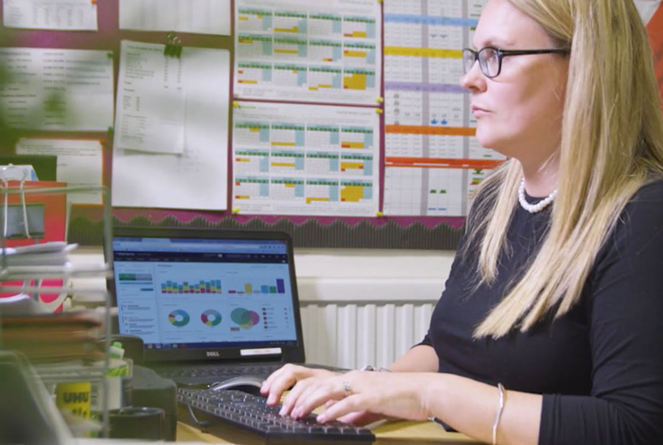Starting a primary school book club can seem daunting. How do you choose a book, keep children interested, and demonstrate impact?
In this blog, we discuss why having a book club is a great idea and share some ideas that are both practical and engaging.
Why is a book club a good idea?
Book clubs can create communities of readers, encouraging lively informal book chat and debate. Outside of the classroom environment children can enjoy reading that is not directly connected to the curriculum and can be exposed to a wider range of authors and genres than they might otherwise come across.
Developing valuable skills
Reading helps children acquire a valuable set of skills, such as listening, being creative, extending their vocabulary and learning about the history and cultural heritage of their own and other countries helping them to access the whole curriculum. Children that read for pleasure generally have better educational outcomes than those that don’t and a regular reading habit encouraged by a book club will be reflected in the classroom.
It’s not just academic skills
As well as academic skills, pupils also learn about developing and expressing their preferences, enabling them to make informed choices. The joy of a well-run book club is that these added social and academic benefits are the organic result of reading when it is done for pleasure.

Who is a book club for?
The key to success is to know your audience and what you want to achieve from the club. Who is the club for? Is it for a specific age group or key stage? Are you trying to target enthusiastic readers, or engage reluctant readers? Is it part of an intervention strategy to improve academic performance? Are you trying to support a broader and more balanced curriculum through different book genres and topics?
When you decide on the focus of the book club it will help structure your club and focus on the outcomes.
Get pupils involved
Involving pupils in the planning and running of the sessions will make them feel like they own the group. It’s a chance for them to suggest titles and for it to feel different from being in the classroom and reading a prescribed text. Find out if your target group has any common interests and then identify reading materials, games, and puzzles to stimulate these interests. Regularly collaborating on ideas will also help to make the book club feel fresh and interesting, helping to keep your readers coming back.
How to run the book club
When setting up and running your book club you need to consider a few practical details to make it as successful as possible.
How often will the club run?
You will need to give everyone enough time to read the book, so once a fortnight or once a month may be frequent enough. Keep the meetings regular and schedule dates in your diary. You want to keep your group interested and wanting to come back, so try not to cancel or change meetings at the last minute.
Where are you going to hold the club?
Holding meetings in a relaxed environment away from a classroom setting is important. If you have a library this might be the obvious place. Or, for a fun meeting in the summer, what about a pop-up tent? The lure of food and refreshments is also an important element of any book club! Books, biscuits and hot chocolate are hard to beat.

How will you measure impact?
Demonstrating impact can help secure time, space and a budget for your book club. Use or adapt the Children’s Reading Surveys created by the Open University to generate ‘before’ and ‘after ‘data. Make sure you take photographs and document your book club activities.
What will you read?
Research tells us that learner-led book selection is important so give your book club members a choice. You could give them a collection of books from which they make the final selection based on covers and blurbs. Try Booktrust recommendations for inspiration. Or turn the process of choosing into a fun book club session:
- Dragons’ Reading Den: Each pupil brings a book to pitch to the book club audience. They have 2-3 minutes to sell their book before the next person pitches.
- Guess the Book: Separate the blurbs, covers and opening paragraphs of books (by copying them, not pulling them out!) and see if children can match them back together again (harder than it sounds if you blank out keywords that would give it away). Which book generates the most intrigue?
- Musical Books: Based on the favourite childhood game of musical chairs. Place a different book on each chair. When the music stops read the blurb and when it starts again you move on. At the end children vote for the most engaging blurb.
- Book Trailers: Watch some book trailers. There are lots produced by publishers.
- Genre Champions: Each child champions a genre, selling to other book club members as a theme for the term.
Creative ideas for your club
- Themed sessions: Dress up or bake cakes based on characters from your book.
- Charades: Split pupils into teams and give them a book character, scene or title to act out.
- Plays: Write a script based on the first chapter of your book and act this out.
- Craft activities: Do a craft activity based on one of the themes in your chosen book.

Try something different
- Book trailers: Make a book trailer using a video maker like Animoto (free and easy to use). See book trailers created as part of Juniper Book Awards for some inspiration.
- Sporting challenges: If your group has chosen a book with a sporty theme use it to inspire a challenge. Kick by Mitch Johnson is perfect for this and might encourage a few reluctant readers to take part in your book club too.
- Raise awareness; does your book focus on a social or environmental issue? Use your book to raise awareness in school. You might try a title like The Soup Movement by Ben Davis, for example, or Josh Lacey’s Hope Jones Saves the World.
And finally, try reading the book aloud chapter by chapter making the most of cliff-hangar chapter endings. Use character voices and intonation, modelling storytelling so that pupils can read aloud to younger pupils, spreading the benefits of your book club throughout the school.


/Primary%20school%20.jpg?width=2000&name=Primary%20school%20.jpg)








.png?width=940&height=788&name=Lingfield%20College%20Case%20Study%20(5).png)
-1.png?width=1000&height=833&name=National%20Association%20of%20Head%20Teachers%20(3)-1.png)
-3.png?width=1080&height=1080&name=Untitled%20design%20(10)-3.png)







